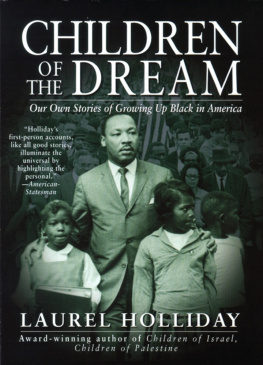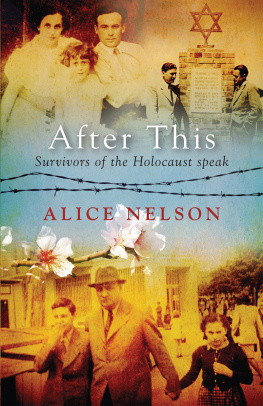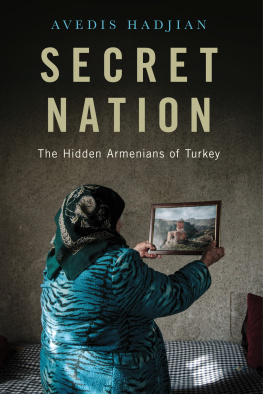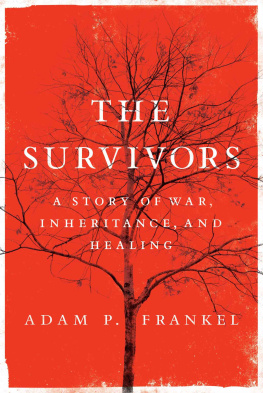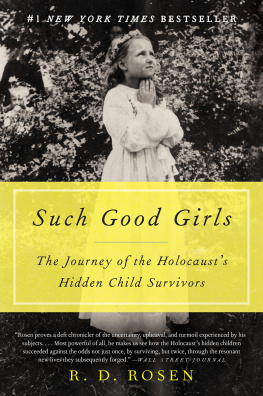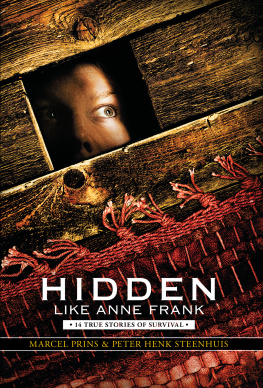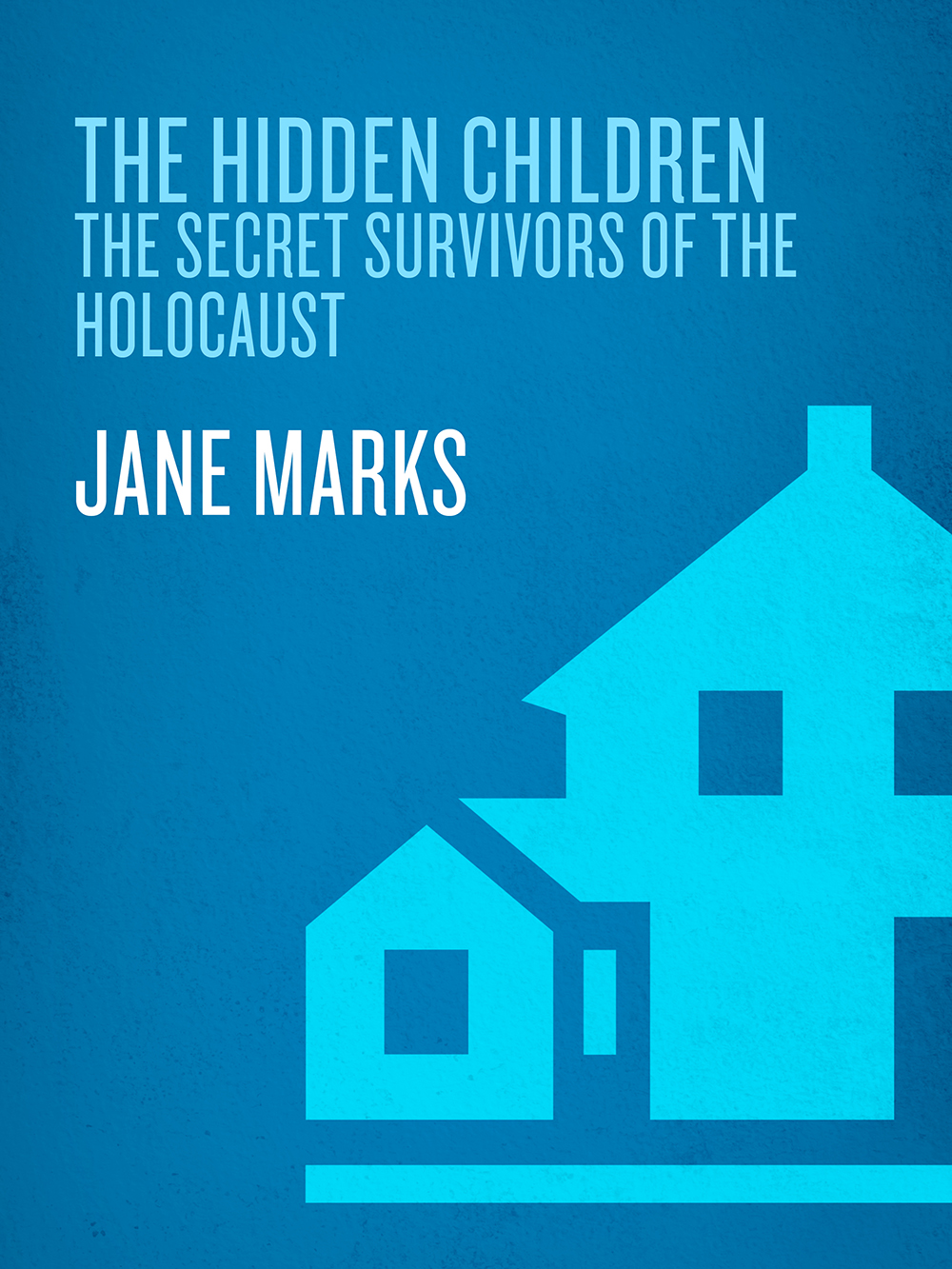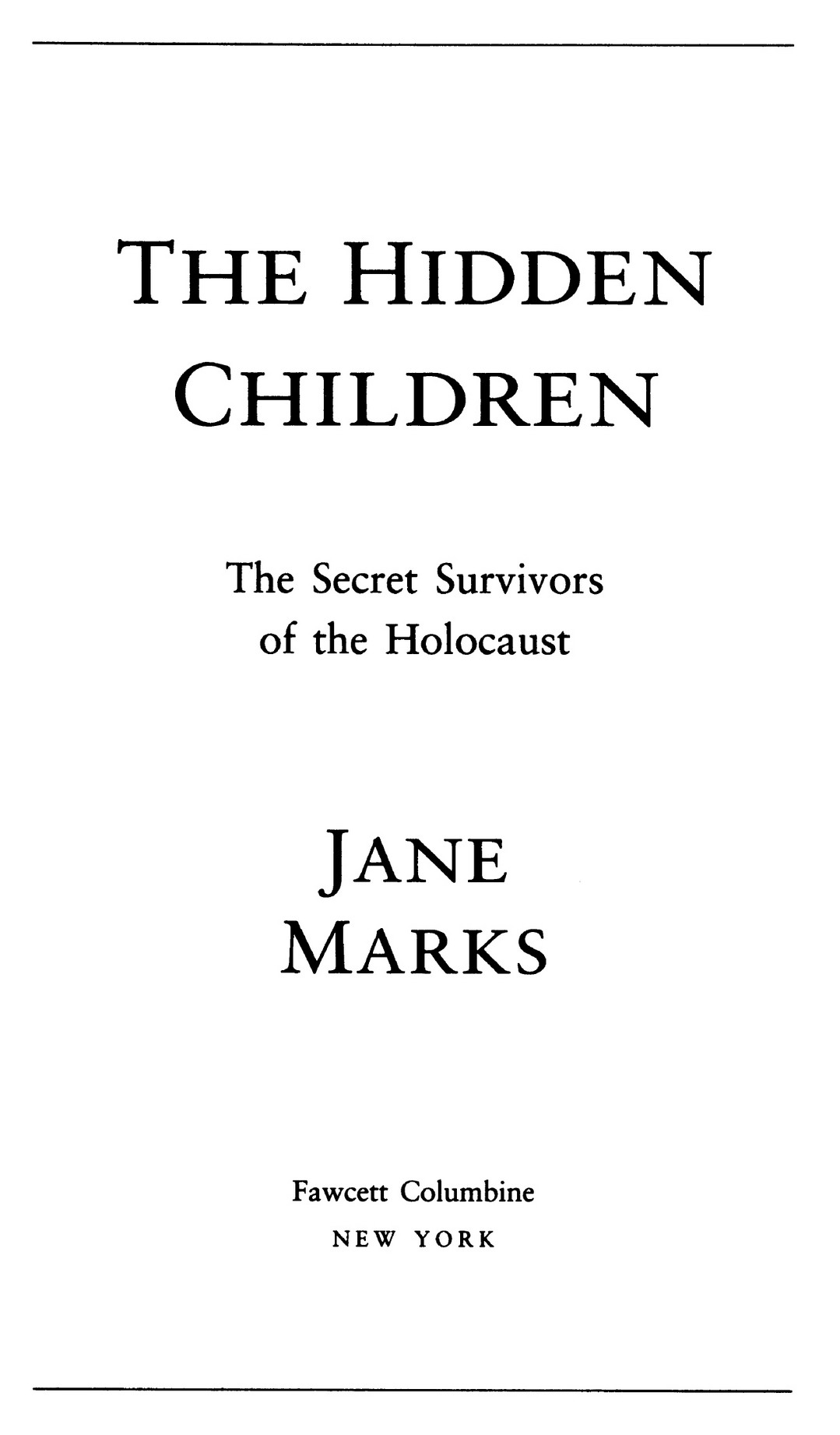Contents
AN IMPORTANT ADDITION TO THE LITERATURE OF THE HOLOCAUST.
The Cleveland Plain Dealer
A harrowing story of courage, of survival, of life.Jane Marks takes us into new territorythe fertile land of the hidden.Their moving wartime exploits are sharedsome for the first timewith the reading world. As a piece of Holocaust literature, it deserves reading.
San Diego Jewish Times
The Hidden Children provides us with previously hidden storiesstories that are as compelling as they are necessary for us to hear. The pain is there, but equally important are the resilience and the healing. The book is an important contribution to Holocaust literature and to the human future.
Robert Jay Lifton, M.D.
Distinguished Professor of Psychiatry and Psychology, John Jay College and CUNY Graduate Center
As we read Marks work, we are reaching out over the bridge of time to merge with the members of our own world family, regardless of our own ethnic origins. We are hiding, hurting, dying and escaping with them. We are not separate from them. Even though we may not be connected by blood, we are united by something far stronger, and that is soul. This book is about members of our soul family.
Clarissa Pinkola Ests, Ph.D.
Author of Women Who Run with the Wolves
The moving and touching stories of The Hidden Children provide a unique and important view of the Holocaust, through the eyes of the youngest victims. How they coped and survived in the midst of hatred is an uplifting and triumphant story of the human spirit.
Gerald L. Posner
Author of Hitlers Children
The Hidden Children is a perfect complement to William Helmreichs Against All Odds.It is inspiration in the best sense of the word. It deserves a high place in the literature of the Holocaust.
Irving Louis Horowitz
Hannah Arendt Distinguished Professor of Sociology and Political Science, Rutgers University
A Fawcett Columbine Book
Published by Ballantine Books
Copyright 1993 by Jane Marks
Preface copyright 1993 by Abraham H. Foxman
A Historical Perspective: Tracing the History of the Hidden-Children
Experience, copyright 1993 by Nechama Tec, Ph.D.
The Psychology Behind Being a Hidden Child, copyright 1993 by Eva Fogelman, Ph.D.
All rights reserved under International and Pan-American Copyright Conventions. Published in the United States by Ballantine Books, a division of Random House, Inc., New York, and simultaneously in Canada by Random House of Canada Limited, Toronto.
Library of Congress Catalog Card Number: 94-94573
ISBN0449906868
Ebook ISBN9780804181464
v4.1_r3
a
To a world in which all children are safe
C ONTENTS
A Historical Perspective: Tracing the History of the Hidden-Child Experience
by Nechama Tec, Ph.D.
The Psychology Behind Being a Hidden Child
by Eva Fogelman, Ph.D.
P REFACE
by Abraham H. Foxman
National Director, Anti-Defamation League
One of the great untold stories of the Holocaust was that of the thousands of children who, like me, survived by hiding or being hidden from the Nazis. Many were still emotionally in hiding until fifty years later when we at last revealed our stories at the First International Gathering of Children Hidden During World War II in May 1991 in New York City. Some 1,600 of us from around the world together broke the silence about how we survived Hitlers killing machine. We spent three extraordinary days talkingwith each other and about each other. Jane Marks, the journalist who had first brought these children to the nations attention with her New York magazine article, was at the Gathering to share this moving experience with us.
We exchanged stories about our hiding places: how we lived for months in sewers, closets, barns, and fields; how we joined the partisans and fought the enemy; how we stayed alive. We examined the guilt that continues to haunt us; the pain we felt at losing our loved ones; our anger; our inability to speak of these experiences with our family; our identity crises; and our confused, frightening, lost childhoods.
We had many questions borne out of fear and guilt. Who were we compared to those who faced unspeakable horror and annihilation in the death camps and ghettos? Was it really safe to reveal our Jewish identity to the world? Could anyone but another hidden child really understand how we felt?
Yes, someone could. Jane Marks listened as many of us shared our personal stories with her and we realized that yes, someone else who had not lived through this experience could understand.
We came to realize the importance of other people hearing our stories so that they could understand the Holocaust in terms of the living as well as the six million Jews who died. Jane Marks became the keeper of our stories.
It was a weekend of miracles and healing. The barrier was broken at last. No longer would we remain silent, ashamed to speak of our past. Though the war had been over for nearly fifty years, we still had been in hidingand now we could face the dawn of a new day.
Jane Markss The Hidden Children: The Secret Survivors of the Holocaust is an extraordinary contribution to an understanding of the Holocaust. Her collection of first-person accounts, by those who survived the war against Jewish children, preserves for history the courage and resources of the hidden as well as those who rescued them.
For me, these inspiring accounts symbolize the triumph of good over evil. They bear repeating in this age of Holocaust denial.
When I was an infant growing up in German-occupied Poland, I was called Henryk Stanislas Kurpi. To all the world, Bronislawa Kurpi was my mother. Actually, she was my Polish Catholic nanny who promised my parents she would take care of me. I was baptized and raised as a Catholic. My parents survived the camps and returned to claim me. A custody battle with my nanny ensued but my parents won. Eventually, my family and I moved to the United States.
Imagine the confusion and pain this turn of events inflicted on all involved. There I was, a Jewish child, making the sign of the cross in the home of my parents, who were observant Jews. Slowly I had to reclaim my identity and learn about Judaism and what it meant to be a Jew.
After I graduated from New York University Law School, I joined the staff at the Anti-Defamation League. Ever since, my lifes work has been in Jewish advocacy and the defense of human rights for all people. Perhaps this is the legacy of my years as a hidden child.
It is a source of pride for me that ADL helped arrange the first Hidden Child Gathering in 1991. Since then we have joined with the conference organizers to establish the Hidden Child Foundation/ADL, under the auspices of the ADL Braun Center for Holocaust Studies. The Foundation has thrived, thanks to dedicated volunteers. Support groups have sprung up across the United States and Canada, throughout Europe and even as far away as Australia. In July 1993, the Second International Gathering took place in Jerusalem, bringing together even more hidden children from all over the world.
Many thousands of us are still in virtual hiding. Some, particularly in Eastern Europe, are still afraid to admit they are Jews because of rampant anti-Semitism. Others may not even be aware of their true identities because their Jewish families perished during the war and their adoptive parents chose not to reveal their backgrounds.



